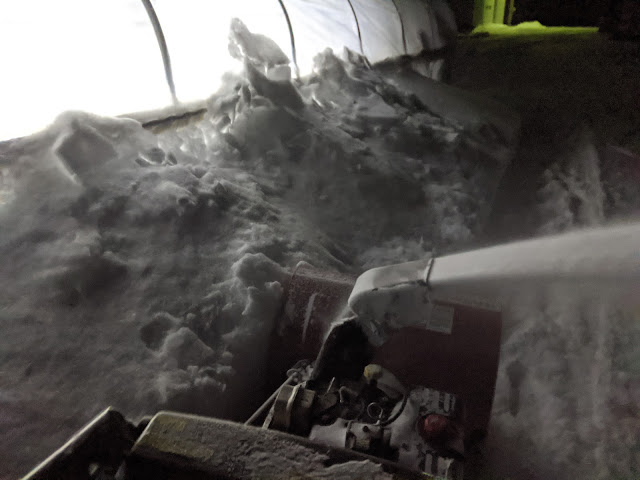Plants get to go in the field today! A lot of work led up to today and we'll finally get to see the garden start!
The first step is to broadfork the soil with the tool you see in the right of this photo. It gets stuck in the ground and then you pull back on the handles to pop open a big chunk of soil. The idea here is to break open the soil to let in air/moisture/nutrients but doing so without mixing up or tilling the soil. The broadfork creates deep vertical breaks in the soil but doesn't stir the layers.
Then, we put compost on the soil to feed the plants. This is ORMI listed organic compost we buy from our supplier in Wisconsin. I still don't like the giant plastic bags but this is great material.
The next step is to power-harrow the surface of the soil to incorporate the compost and break up chunks which would otherwise make it difficult to plan the seedling plugs. This implement uses vertical knives to stir only the top couple inches of soil where the compost is mixed in. We avoid tilling any deeper than this so that the soil structure is maintained.
Some of our plants are covered with re-usable landscape fabric so that we don't need to weed them. We've made plywood templates that we can lay on the fabric to quickly burn the holes on equally spaced patterns.
We're planting Kale, Broccoli and Swiss Chard, while they are somewhat cold hardy, we need to put row-cover protection on them to keep the frost off.
First we need metal hoops for the row cover. It works out great that the as-shipped coil diameter is about right to make one cut straight through the coil, producing a whole stack of hoops that are just the right size.
We work down the rows, installing hoops every five feet or so. Here you can also see the landscape fabric with the plants in there.
We stretch out some row cover off a roll and sand-bag it down. We've learned from the silage tarps that the correct quantity of sand-bags is always: a lot.
There are different widths of covers so we can save time and sandbags by combining like items.














































